Ever find yourself gasping for air after just a few laps, wondering how elite swimmers make it look so effortless? You’re not alone.
Building stamina in the pool takes time, but it’s absolutely possible. With the right approach, you can swim longer, stronger, and feel good doing it.
Here's how to increase stamina for swimming, step by step.
1. Improve Your Technique
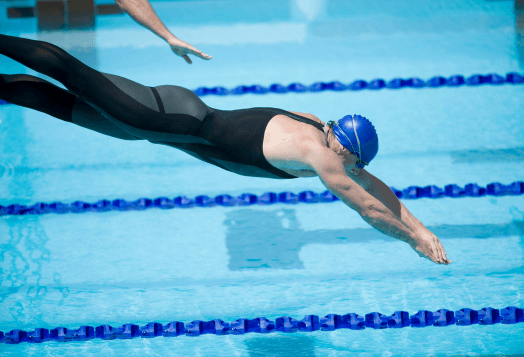
Before adding volume or speed, start by refining your swimming technique. An efficient technique allows you to glide through the water using less energy, which directly contributes to lasting stamina. In fact, water is 800 times denser than air, so poor form can wear you out quickly.
Key areas to focus on include:
Body position: Keep your body horizontal and aligned to reduce drag.
Stroke mechanics: Work with a coach or video yourself to ensure smooth, symmetrical movements.
Breathing rhythm: Practice bilateral breathing to balance your stroke and oxygen intake.
Learning how to increase stamina for swimming starts with mastering the basics under the guidance of swimming coaches. You’ll find that even minor adjustments can drastically improve your swimming performance and energy efficiency.
2. Incorporate Interval Training
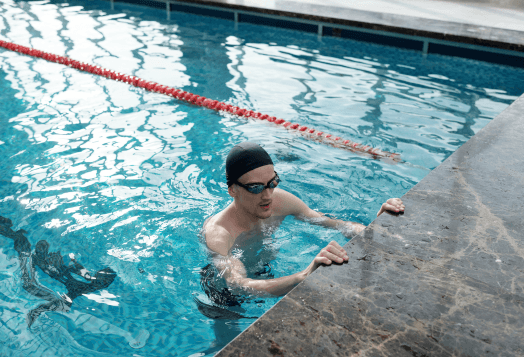
Interval training is a powerhouse method when it comes to increasing both aerobic and anaerobic endurance. Alternating high-intensity swims with short rests challenges your cardiovascular system and builds resilience.
Try this simple interval workout:
10 × 100 metres freestyle swimming, rest for 30 seconds between each rep.
Interval workouts help you push your heart rate zones, training your body to recover faster while swimming more powerfully. This is critical for anyone learning how to build stamina for swimming.
3. Gradually Increase Distance and Duration
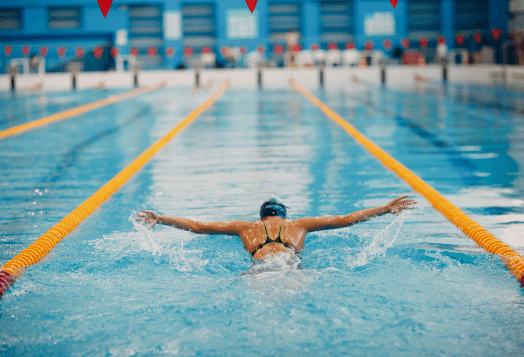
When working on how to build endurance in swimming, it's tempting to overdo it. But the key to safe and effective progress lies in gradual increases. Begin with distances you can manage comfortably, then increase by around 10% each week.
For example:
Week 1: Swim 800 metres total
Week 2: Increase to 880 metres
Week 3: Increase to 970 metres
This method of progression prevents overtraining and reduces the risk of injury while effectively enhancing swimming stamina.
4. Utilise Dryland Strength Training
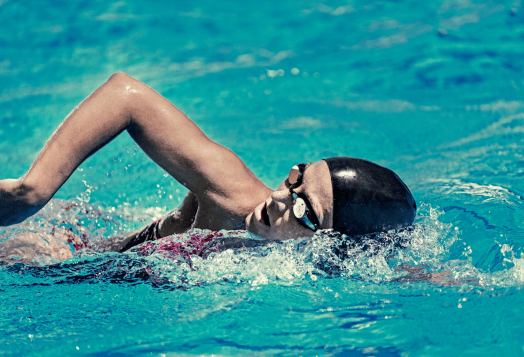
Dryland training can significantly complement your pool sessions. Strengthening the muscles used in swimming helps generate more power with less fatigue.
Effective dryland exercises:
Planks and leg lifts for core control
Squats and lunges for lower body strength
Pull-ups and push-ups for upper body endurance
Incorporating these routines two to three times a week will support better swimming conditioning.
5. Focus on Breathing Techniques
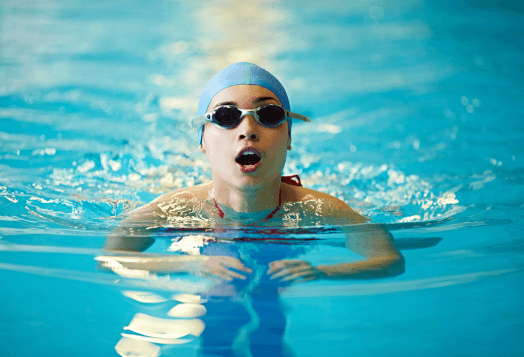
Controlled, efficient breathing is required when learning how to increase stamina for swimming. Shallow or erratic breathing leads to early fatigue, whereas strong lung capacity improves your stamina over long distances.
Try these breathing exercises:
Box breathing: Inhale for 4 seconds, hold for 4, exhale for 4, hold for 4.
Apnea training: Practice holding your breath during low-intensity laps to simulate race conditions.
Improving your breath control directly boosts aerobic capacity, helping you swim longer without gasping for air.
6. Mix Up Your Strokes
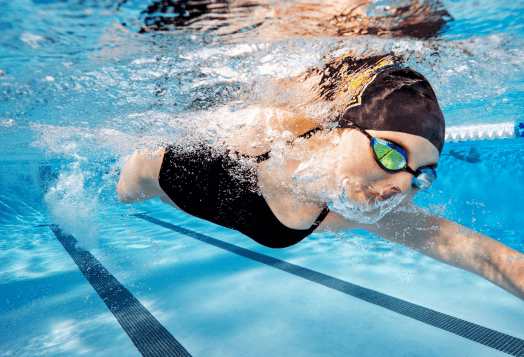
Always swimming freestyle? Try rotating through all four competitive strokes: freestyle, backstroke, breaststroke, and butterfly stroke. This approach works with different muscle groups, reduces the risk of overuse injuries, and keeps training sessions mentally stimulating.
For example, a balanced workout could include:
200m freestyle
100m backstroke
100m breaststroke
50m butterfly
Repeat
This varied approach, combined with swimming for weight loss, is particularly useful for figuring out how to build swimming endurance for beginners.
7. Implement Pacing Strategies
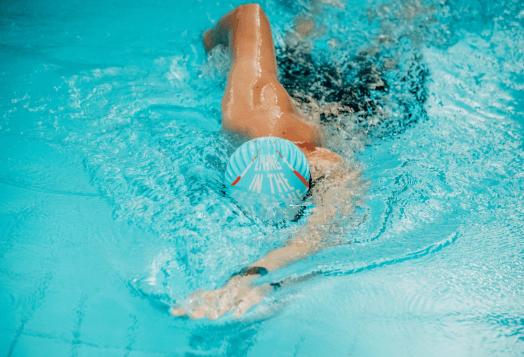
Many swimmers burn out early because they go too hard at the start. Learning to pace yourself is essential when improving swimming endurance. One effective method is negative splitting, where the second half of your swim is faster than the first.
Pacing also helps you:
Conserve energy for the final stretch
Avoid early fatigue
Build mental discipline
Use a swim watch to monitor your lap splits and practise consistent pacing to boost swimming fitness over time.
8. Prioritise Consistent Training
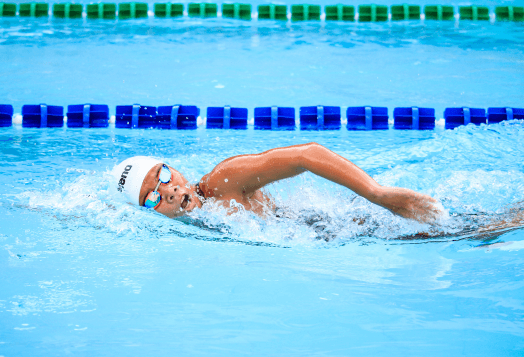
The number one mistake swimmers make is inconsistency. You can’t expect to improve your stamina if you swim once a fortnight. A consistent training plan that includes varied sessions (speed, endurance, drills) will show results faster.
Suggested schedule:
3 - 4 sessions per week
At least one long, steady-state swim
One or two interval workouts
One technique or drill-focused session
Rest days are just as important to recovery and endurance gains.
9. Stay Hydrated and Nourished

Swimming might not feel like a sweat-heavy sport, but you lose just as many fluids. Dehydration can severely impair your stamina. Similarly, balanced nutrition provides the fuel needed for endurance.
Nutrition tips for swimmers:
Carbohydrates: Fuel your muscles for long swims
Proteins: Aid in muscle repair and growth
Healthy fats: Support longer energy release
Hydrate before and after your swim to maintain peak performance.
10. Monitor Your Progress
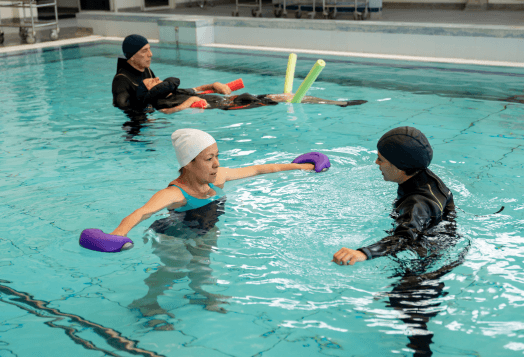
Benefits of tracking:
Notice improvements in endurance
Identify when to rest or push harder
Set achievable weekly goals
This keeps your training purposeful and focused on learning how to improve endurance for swimming.
Your Stamina Journey Starts Now
Boosting your swimming stamina isn’t about swimming more; it's about swimming smarter. Whether you're chasing personal records, improving fitness with the benefits of swimming, or training for open water races, applying these tips will help you build a solid foundation of aerobic and muscular endurance.
The journey to discovering how to build swimming endurance is deeply rewarding. With the right blend of technique, training variety, breathing control, and consistent effort, you’ll not only swim longer, but stronger, smoother, and more confidently too.




